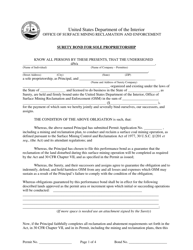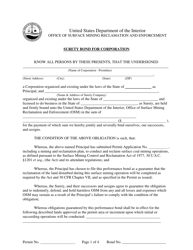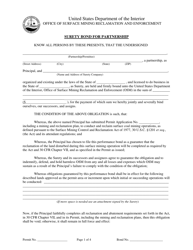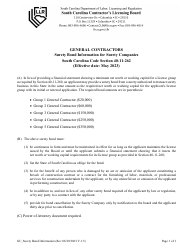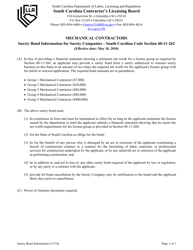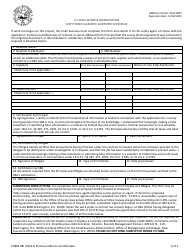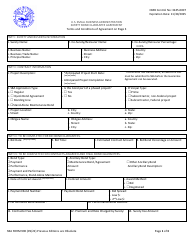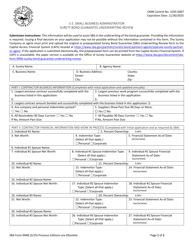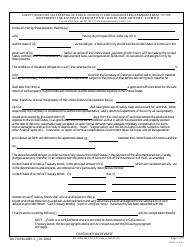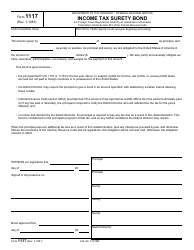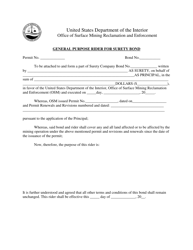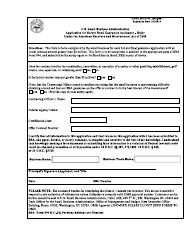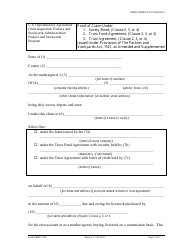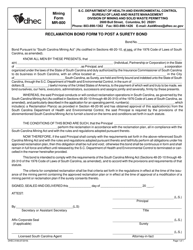Surety Bond - South Carolina
Surety Bond is a legal document that was released by the South Carolina Department of Labor, Licensing and Regulation - a government authority operating within South Carolina.
FAQ
Q: What is a surety bond?
A: A surety bond is a three-party agreement that offers financial protection and guarantees that a party will fulfill its obligations.
Q: Who are the three parties involved in a surety bond?
A: The three parties involved in a surety bond are the principal (the party required to obtain the bond), the obligee (the party protected by the bond), and the surety (the company that provides the bond).
Q: Why would someone need a surety bond in South Carolina?
A: There are various reasons why someone may need a surety bond in South Carolina, such as for licensing and permit requirements, construction projects, court proceedings, or to guarantee payment or performance.
Q: Do all businesses in South Carolina require a surety bond?
A: Not all businesses in South Carolina require a surety bond. The need for a surety bond depends on the type of business and the regulations set by the state or local government.
Q: How much does a surety bond cost in South Carolina?
A: The cost of a surety bond in South Carolina can vary depending on factors such as the bond amount, the type of bond, and the applicant's credit history or financial strength.
Q: Are surety bonds the same as insurance?
A: No, surety bonds are not the same as insurance. Insurance protects against unexpected events, while surety bonds guarantee specific obligations or responsibilities.
Q: What happens if a party fails to fulfill their obligations under a surety bond?
A: If a party fails to fulfill their obligations under a surety bond, the bond's obligee can make a claim against the bond. If the claim is valid, the surety will compensate the obligee and seek reimbursement from the principal.
Form Details:
- Released on April 1, 2023;
- The latest edition currently provided by the South Carolina Department of Labor, Licensing and Regulation;
- Ready to use and print;
- Easy to customize;
- Compatible with most PDF-viewing applications;
- Fill out the form in our online filing application.
Download a fillable version of the form by clicking the link below or browse more documents and templates provided by the South Carolina Department of Labor, Licensing and Regulation.





